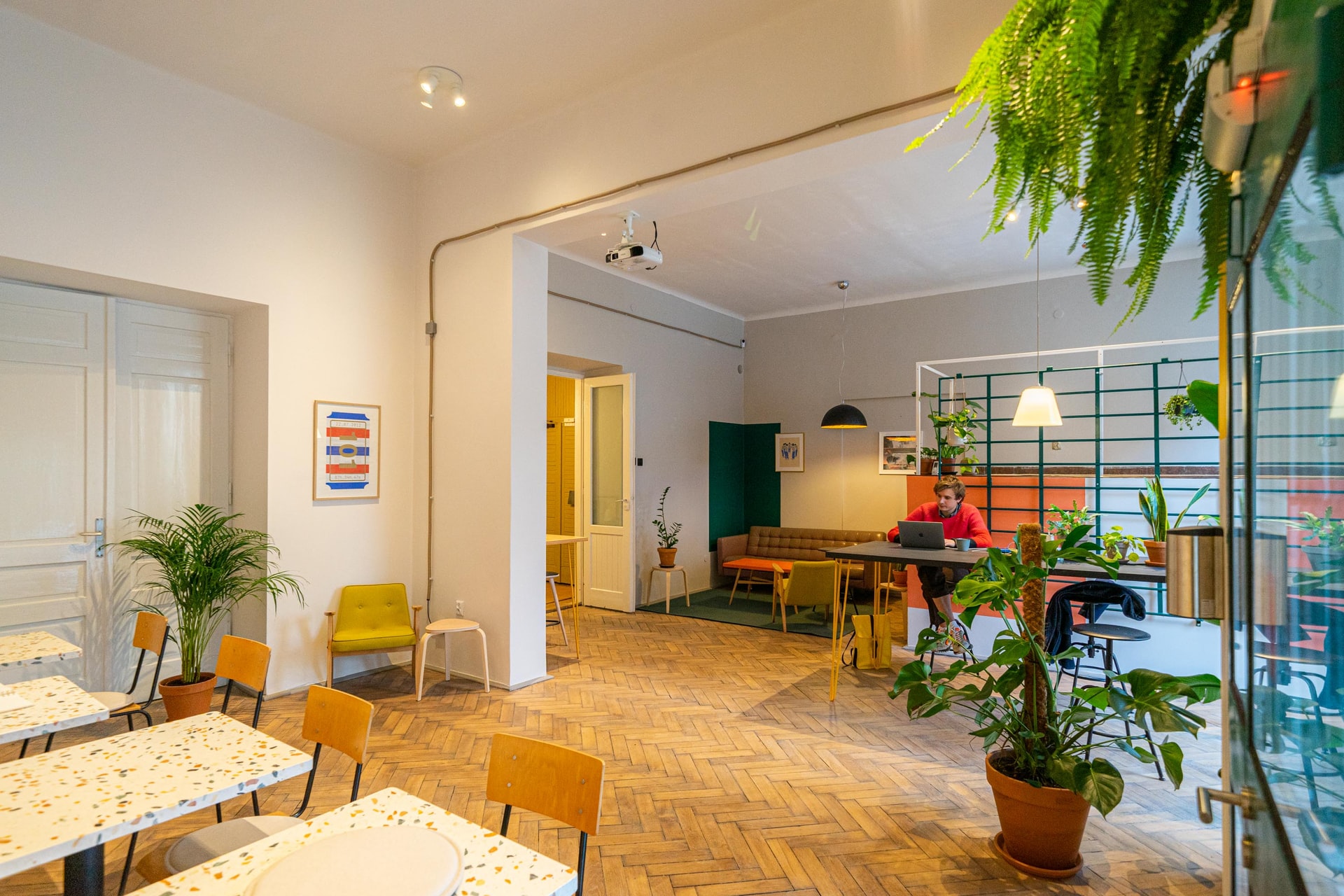Communal living and co-housing arrangements may seesavm like a new trend, but these are living arrangements that have been practiced for centuries. Single-family homes became the norm during the 1950s, but before that point, homes often accommodated extended family, and rooming houses were commonplace in both cities and small towns. Today, there is renewed interest in communal living and co-housing as a way to live more frugally or simply to live in a socially comfortable setting.
Although communal living was a rule of thumb tens of thousands of years ago, many of today’s architects believe that it’s also likely to be increasingly popular in the future. Communal living housing is popping up, especially in major cities like New York City, San Francisco, and London. In many of these communal homes, residents share common spaces like kitchens and living rooms but retain their own private bedrooms. In Scandinavia, co-housing arrangements have really taken off, and many of today’s designers are inspired by those carefully designed spaces that appear so conducive to cohabitation. Here, we’ll delve deeper into this lifestyle trend and explore how to make community living work.
What Is Communal Living
Communal living varies because it’s a flexible way of living. Loosely, it means living with people who are not family or life partners. There are many forms of communal living we’re already quite accustomed to. For instance, college dormitories and assisted living communities for seniors are types of communal living.
There are also less formally arranged communal living and co-living arrangements between a couple or many individuals. There are communal living communities that are designed for artists. There are also communal living arrangements designed for young adults. Although many younger people do choose to live with one or several roommates as they enter the workforce and begin to build their lives, the mindset on communal living today involves a more permanent focus and less temporary arrangement.
What Are the Benefits of Communal Living and Co-housing?

There are many benefits associated with communal living and co-housing that are attracting people today. Some of the chief benefits include:
Financial Benefits
Living with other people cuts down on living expenses. Co-living residents share the cost of housing, utilities, cable or streaming services, and even groceries if they choose. Just consider that the average household eats up about 30% of the individual’s after-tax income. Imagine if you could reduce that by half or three quarters. Many people are doing more than imagining this type of cost savings and are actively saving more money by living in a co-living or communal living arrangement.
Environmental Benefits
For some people, communal living is a more sustainable way to lead their lives. Co-living is certainly more eco-friendly. It’s certainly better for the environment to heat just one house for four people than to heat four houses for four separate individuals. Communal living does cut down on gas and electricity use and may even halt future developments that take up green space. Many property owners are converting constructions into co-living housing.
Social Benefits
Many people don’t like living alone. Loneliness can lead to reduced mental health and less quality of life. In fact, many seniors move into assisted living communities primarily for social engagement as well as on-site care if they need it. Many people find it enjoyable to live in a community environment where there’s always someone to talk to, share a meal with, or play a game of cards with.
Types of Cohousing Arrangements
There are many types of communal living and cohousing types found in cities, suburbs, and rural locations. We’ll explore a few of the most popular options here:

Senior Living Communities
Senior living communities allow retirees to live independent lives—just not alone. Many seniors enjoy living with other seniors who share their interests rather than alone or with family. Assisted living communities for seniors are more formal arrangements with built-in services and amenities that are specifically designed with seniors’ needs in mind.
Urban Communal Living Arrangements
Urban communal arrangements may take many forms. It could be a large city house or a group of townhomes. These urban communities may feature a wide range of amenities like fitness areas and swimming pools. Of course, even a condominium can act as a co-living environment for roommates.
Suburban and Rural Communal Housing
In the suburbs and rural areas, people have more space to spread out. So, many of the communal houses or complexes are associated with outdoor community spaces for gardens, volleyball or basketball courts, and outdoor living spaces like large patios.
Mixed-Use Communities
Mixed-use communities are dynamic and may offer multiple living arrangements and on-site amenities. They may be connected to a marketplace or shops. There may be communal living apartments and single-renter apartments in the same complex.
The Structure of a Cohousing Community

As you may have guessed, there’s no set format for a cohousing community. Sometimes these communal living arrangements are located within a large city house or series of townhouses. Sometimes they’re situated in a warehouse that’s been converted into co-living condominiums. Of course, the main feature of these facilities is that there is both private and shared living space in each setup. Sometimes there is outdoor living space that the community can make use of. The private space is typically a bedroom and sometimes a private bathroom, while the shared spaces may include:
- Kitchen
- Laundry room or facilities
- Living room
- Foyer
- Dining Room
Sometimes there are shared playrooms for communal living communities where children live. Some workshops contain shared tools and equipment. Depending on where you live, there are likely to be many types of communal living arrangements—each differing in some way. Another spot that you might be sharing could be the parking space, depending on the type of co-living space you find, luckily there are many other ways to find a parking spot for your car.
Building a Communal Living Community

If you can’t find a co-living situation or communal living arrangement that suits you, you can always build your own. It requires some careful planning and, perhaps, some independent research, but many people are taking the initiative to build their own communal living spaces.
Financial Concerns
Regardless of who lives in a space, somebody—or everybody—has to sign on to it and make the payments. Some communities are set up to pay a set amount for rent and utilities even if one of the residents moves out. If you’re starting a community, you’ll need to talk to a financial planner or accountant to get help separating your personal finances and assets from the community. This isn’t typically a problem but a step you don’t want to ignore.
Bylaws
How do you envision your community operating? How will chores be accomplished? How will bills be paid? How much will each resident contribute? Bylaws will help you maintain order and may prevent disagreements. They should also include a section about how disagreements should be handled.
Purchasing Property
You’ll need to purchase property and, possibly, set up an HOA. However, your bylaws may replace the need for an HOA. There are many options when it comes to property. You may want to convert an existing space into a community living facility. Or, you may even want to construct one.
How to Make Communal Living Work

Shared tasks and well-defined chores are often at the heart of a happy community living home. Bylaws should spell out what each resident is responsible for. Here are some tips to help make communal living a success:
Define Chores
Some people see chores, where others see none. Maintaining a clean and organized environment is often a big challenge for communal living arrangements. It’s helpful to define the chores and assign a calendar for accomplishing them and who is responsible for completing them with a rotating schedule.
Divide Tasks
Division of household labor is essential. Be sure that after defining the chores, they are assigned fairly. Also, be deliberate about when chores should be completed.
Pets
Are pets allowed? Have you considered this aspect of communal living? If you allow pets, be sure to think through this part of your bylaws carefully.
Visitors
Some people like to entertain more than others. What do you do when one resident wants to invite friends over for a big football game, and another wants to put up traveling family members for a few nights? Have a plan in place for these types of situations that are bound to come up.
Is Communal Living Right for You?

For as many people who are attracted by the concept of communal living, there are at least just as many turned off by the idea. Many people value their privacy and don’t want to live by other people’s terms. That’s understandable. If the thought of asking your cohabiting housemates if you can invite your mother to stay with you for a week is off-putting, you might not be a candidate for this type of arrangement.
Living with other people may require certain personality traits and a willingness to share and live according to a set of shared rules. The trade-off is, of course, all the benefits that we discussed earlier. If you’re thinking about moving into a co-living situation, talk to other people who live in communal arrangements. Ask them to share the pros and cons of their experience to help you make the right decision about how to live.




